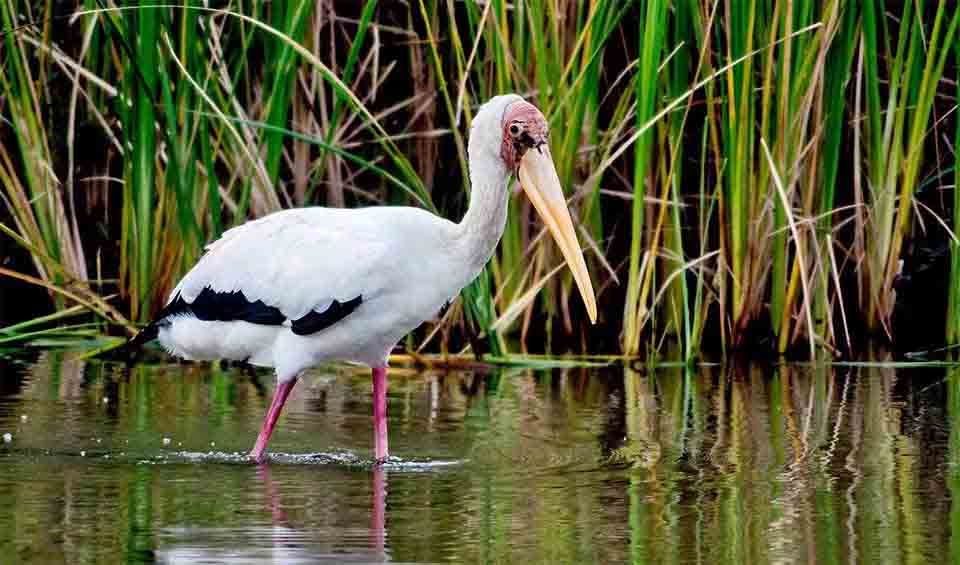An increasingly rare wading bird found in Southeast Asia, with a dwindling presence in the Malay Peninsula, parts of Indonesia, and Cambodia. This stork is often compared to the Painted Stork for its similar size and habitat preferences but can be distinguished by its striking appearance and more threatened status.
Adorned primarily in white, the Milky Stork’s plumage contrasts beautifully with its dark red face and legs, and during the breeding season, its plumage takes on a creamy-yellow hue. The bill, of a gentle pinkish-orange coloration, is robust and slightly down-curved, perfect for foraging in its wetland habitat. In flight, the Milky Stork is majestic, displaying extensive black flight feathers and tail that are usually hidden at rest.
Habitats of the Milky Stork include mangrove forests, swamps, and various coastal lowland areas, which are essential for their survival, providing both food and nesting sites. They feed mainly on fish, amphibians, and small reptiles, using their sensitive bills to locate prey in the muddy bottoms of shallow waters.
The Milky Stork breeds colonially, often in the same nesting sites year after year if undisturbed. They typically choose tall mangroves for their roosts and nests, which are constructed from sticks and vegetation. Clutch sizes vary from one to four eggs, and both parents share the responsibilities of incubation and chick rearing.
Distribution
 Cambodia
Cambodia Official estimate
Official estimate
 Indonesia
Indonesia Official estimate
Official estimate
 Indonesia
Indonesia Official estimate
Official estimate
 Malaysia
Malaysia Official estimate
Official estimate
 Singapore
Singapore Thailand
Thailand Official estimate
Official estimate
 Vietnam
Vietnam Official estimate
Official estimate
Anything we've missed?
Help us improve this page by suggesting edits. Glory never dies!
Suggest an editGet to know me
Terrestrial / Aquatic
Altricial / Precocial
Polygamous / Monogamous
Dimorphic (size) / Monomorphic
Active: Diurnal / Nocturnal
Social behavior: Solitary / Pack / Herd / Flock
Diet: Carnivore / Herbivore / Omnivore / Piscivorous / Insectivore
Migratory: Yes / No
Domesticated: Yes / No
Dangerous: Yes / No




